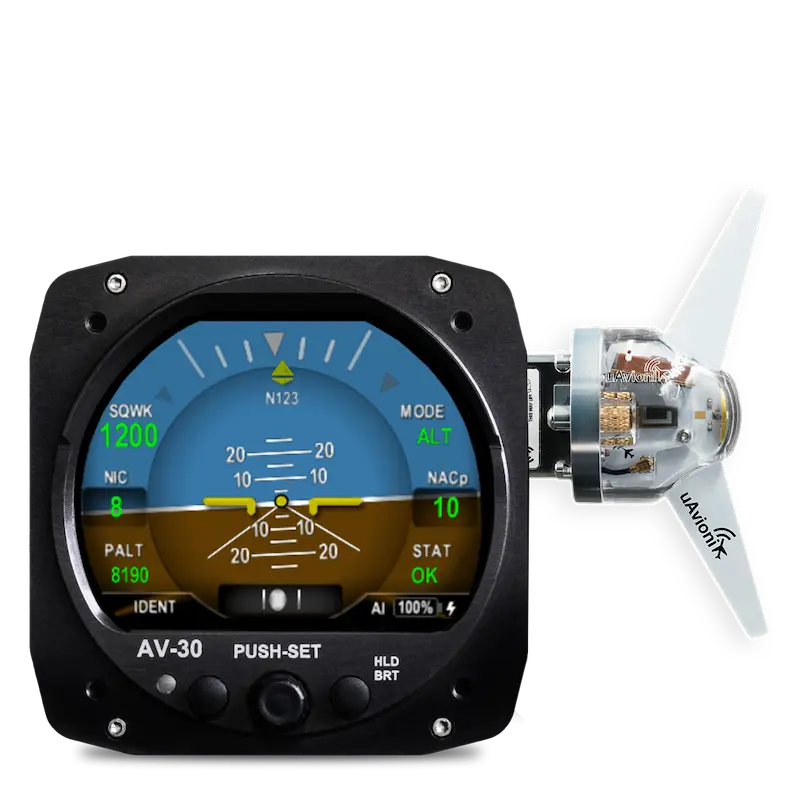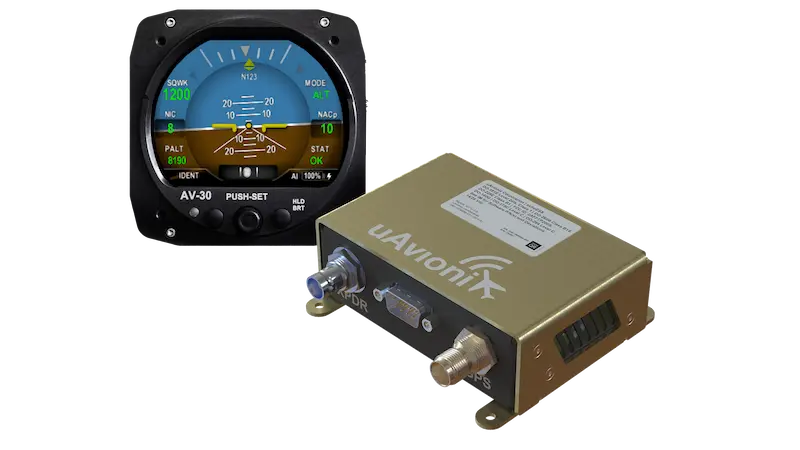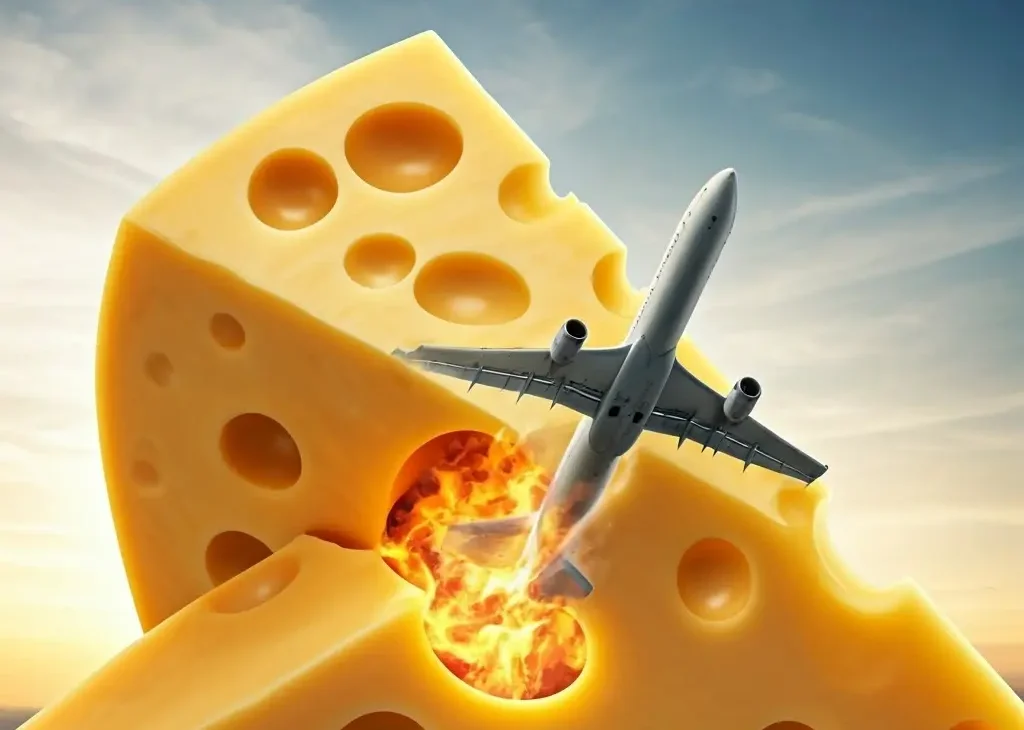When tragedy strikes in the skies, it exposes the hidden vulnerabilities in our airspace safety systems. The fatal mid-air collision near Washington, DC between an American Airlines flight and a military helicopter earlier this year provided a stark reminder that even in an era of advanced technology, critical gaps remain. This incident, which claimed multiple lives, has become a rallying point for aviation safety advocates and innovators like uAvionix, a company whose mission is to “connect everything that flies,” and ensure that such accidents become relics of the past.
uAvionix has become synonymous with innovation in ADS-B technology, drone safety and the seamless integration of crewed and uncrewed aircraft. In a recent Dawn of Autonomy podcast, Christian Ramsey, the company’s Chief Commercial Officer, whose deep aviation expertise and passion for safety have helped shape uAvionix’s trajectory and influence across the industry, provided his perspective on airspace safety and how to safely integrate new entrants (think: drones and electric vertical takeoff and landing aircraft, or eVTOLs) in an increasingly crowded global airspace.
The Swiss Cheese Model: What Fell Through the Holes

According to Ramsey, at the heart of the tragedy was a series of failures—what safety experts call the “Swiss cheese model.” Each layer of safety, from airspace design to radar surveillance and onboard collision avoidance systems, had its own holes. In this case, those holes lined up perfectly and safety fell through.
The helicopter was operating with its ADS-B Out system turned off, a policy-driven decision that removed a vital layer of protection. The airliner, while equipped with ADS-B Out and a Traffic Collision Avoidance System (TCAS), may not have had the necessary ADS-B In capability to detect the helicopter. Its TCAS alerts were likely suppressed, as they often are near airports to avoid nuisance warnings.
Ramsey believes that had both aircraft been broadcasting and receiving ADS-B data, the likelihood of the collision could have been dramatically reduced. uAvionix’s products, designed for rapid installation and universal compatibility, are precisely the kind of solutions that could have filled the gaps exposed by this tragedy.
By making it easier for all aircraft—crewed and uncrewed, civilian and military—to participate in a shared situational awareness network, uAvionix continues to work to ensure that such accidents become a thing of the past.
The False Sense of Security: Gaps in the ADS-B Mandate
Before ADS-B, air traffic relied heavily on ground-based radar. While effective, it lacked the precision and real-time accuracy needed for today’s congested skies. ADS-B changed the game by allowing aircraft to broadcast their exact GPS position. This made them visible to other aircraft and ground stations with unprecedented clarity.
The FAA’s 2020 ADS-B Out mandate was a leap forward, requiring most aircraft in controlled airspace to broadcast their position using GPS-based technology. Yet, as Ramsey pointed out, the rule left significant exceptions. Many general aviation aircraft—estimated at 20,000 to 30,000 in the U.S.—remain unequipped, particularly those operating at lower altitudes where they are most likely to encounter drones. Military aircraft, gliders, balloons, and certain legacy planes are also exempt. This allows such “dark” aircraft to remain invisible to ADS-B-based detect-and-avoid systems.
uAvionix recognized that this patchwork of equipped and unequipped aircraft posed a significant risk, especially as drone operations expanded. The company’s approach has always been to maximize situational awareness for all airspace users by advocating for universal equipage and by developing products that make it easier and more affordable for both crewed and uncrewed aircraft to participate in the ADS-B ecosystem.
This patchwork of equipped and unequipped aircraft creates a false sense of security for pilots and drone operators alike. “You get a little bit of a false sense of security that you’re seeing everything because you see a lot, but there’s not an aircraft that are not equipped out there, and that are presenting a risk at this point,” Ramsey explained.
uAvionix recognized that this patchwork of equipped and unequipped aircraft posed a significant risk, especially as drone operations continue to expand. The company’s approach has always been to maximize situational awareness for all airspace users by advocating for universal equipage and by developing products that make it easier and more affordable for both crewed and uncrewed aircraft to participate in the ADS-B ecosystem.
uAvionix: Building the Layers of Safety That Matter

uAvionix was founded in 2015 with a clear vision: to address the critical gap in airspace awareness and safety as drones began to share the skies with traditional aircraft. The company’s technical founder, Paul Beard, brought expertise from the silicon industry and a passion for radio-controlled (RC) aircraft. Recognizing the impending collision of RC and commercial drone technologies, Beard developed a command and control link that became the industry standard for remote control aircraft. This innovation laid the groundwork for uAvionix’s focus on miniaturized, high-performance avionics.
From the outset, uAvionix has been laser-focused on enabling cooperative airspace environments. The team saw that as drones proliferated, the need for reliable “detect and avoid” solutions would become paramount. ADS-B, a technology that leverages GPS to broadcast an aircraft’s position, offered a path forward. However, regulatory hurdles—particularly the FAA’s initial reluctance to allow ADS-B Out on small drones—forced the company to innovate in new directions.
Rather than be deterred, uAvionix pivoted to ensure that crewed aircraft could be seen by drones, capitalizing on the FAA’s ADS-B mandate for manned aviation. This strategic move not only filled a critical safety gap but also positioned uAvionix at the forefront of both crewed and uncrewed airspace integration.
Christian Ramsey: A Career Built on Aviation Safety
As for Ramsey himself, his two-decades long career in the aviation sector spans the full spectrum of aviation technology—from flight simulation and air traffic management to advanced surveillance systems and uncrewed aircraft integration. In his own words, “Personally…I’ve always been in aviation technology and always focused on safety.”
Ramsey began his aviation journey as a software engineer, developing high-fidelity flight simulators for both military and civilian aircraft. His technical acumen and leadership skills propelled him into management roles at industry giants like Rockwell Collins and Exelis, where he oversaw the development and deployment of cloud-based airport management solutions and led programs focused on integrating uncrewed aircraft into the National Airspace System (NAS).
He honed his specific expertise in Automatic Dependent Surveillance–Broadcast (ADS-B) technology during his tenure as Deputy Program Manager at Harris Corporation, where he played a pivotal role in the Federal Aviation Administration’s (FAA) NextGen surveillance initiatives.
Ramsey’s unique blend of technical, regulatory and operational knowledge made him a natural fit for uAvionix, which he joined in 2016. He quickly rose to become President and now Chief Commercial Officer. He is also a licensed private pilot and UAS operator, bringing firsthand understanding of the challenges and opportunities facing both crewed and uncrewed aviation.
A Portfolio Built for Integrating Modern Airspace
Ramsey has helped guide the development of uAvionix’s product suite, which reflects his and the company’s commitment to safety, miniaturization and ease of integration. uAvionix’s customer base spans general aviation pilots, commercial drone operators, defense agencies and airports. The company’s solutions are trusted by organizations seeking to operate safely in complex, mixed-use airspace. Its products are increasingly being adopted in international markets, including recent regulatory approvals in the United Kingdom for drone-based ADS-B operations. Its core technology is a dual-frequency ADS-B chip, designed from the ground up to be small enough for drones yet robust enough for certified aviation applications.
Rapid, Accessible Solutions for General Aviation
For general aviation, uAvionix offers innovative solutions like the skyBeacon and tailBeacon series—ADS-B Out systems that replace existing navigation lights to enable rapid, low-cost installation. These products have helped thousands of pilots comply with the FAA mandate without the need for lengthy and expensive avionics shop visits.
Its echoESX EXP is a state-of-the-art, remotely installed Mode S ADS-B transponder (essentially a digital ID badge for airplanes) featuring integrated Satellite-Based Augmentation System Global Positioning System (SBAS GPS) and seamless compatibility with AV-20 and AV-30 displays (digital cockpit displays designed to replace several traditional round-dial instruments in small aircraft). Unlike previous models, it doesn’t require a navigation light form factor. This makes it ideal for both cockpit upgrades and new aircraft builds. Its design streamlines installation while delivering advanced compliance and performance for modern aviation needs.

Drone Safety: Beyond the Horizon
As drone operations move beyond visual line of sight (BVLOS) and into more complex environments, the need for robust detect-and-avoid (DAA) solutions becomes even more pressing. uAvionix has been at the forefront of this evolution, developing products that address both the technical and regulatory challenges of drone integration.
The company’s “Ping” family of transceivers delivers ADS-B In and Out capabilities in a package small enough for even the most weight-sensitive platforms. It’s recently UK-approved ping2020, provides lightweight, low-power ADS-B Out and In solutions for drones. These devices enable drones to broadcast their position to nearby aircraft and receive real-time traffic data. This supports safe BVLOS operations even in mixed-use airspace.
uAvoinix’s acquisition of Iris Automation a year and a half ago brought advanced camera-based detection systems into its portfolio, to complement its ADS-B offerings. The Casia ground-based surveillance system (Casia-G), for example, acts as a “virtual visual observer.” It continuously scans the sky for both ADS-B-equipped and non-equipped aircraft. Recent enhancements to Casia-G (4.0) have added groundbreaking nighttime detection capabilities. This addresses a critical need for drone-as-first-responder (DFR) and public safety operations.
Casia G 4.0’s nighttime aircraft detection makes it the first ground-based system to enable true 24/7 BVLOS flights. This breakthrough is not just theoretical: the Fort Wayne Police Department in Indiana became the first agency to receive FAA approval to use Casia G for nighttime BVLOS operations, allowing their drones to respond to emergencies, conduct search and rescue, and enhance public safety at any hour.
Finally, the company’s remote identification (remote ID) modules and ground-based surveillance systems further extend its reach and help support both regulatory compliance and operational safety for a wide range of customers. These provide an additional layer of accountability and traceability for drone operators.
Building an Ecosystem of Safety
uAvionix’s vision extends beyond individual products to the creation of a comprehensive safety ecosystem. By integrating airborne, ground-based and networked solutions, the company seeks to forge a future where every aircraft—regardless of size, mission or operator—can participate in a shared airspace with confidence.
This modular, interoperable approach is gaining traction not only in civil aviation but also in defense and public safety sectors. As the industry moves toward more open architectures and plug-and-play solutions, uAvionix remains well-positioned by offering products that can be easily integrated into existing systems and adapted to new operational requirements.
Looking Ahead: The Future of Airspace Integration
With new product announcements on the horizon and a growing international footprint, uAvionix shows no signs of slowing down. The company’s relentless focus on safety, innovation and customer needs has made it a trusted partner for pilots, drone operators and regulators alike.
Christian Ramsey and the uAvionix team remain committed to their founding mission: making the skies safer for everyone. As drones become more prevalent and airspace grows more complex, the need for universal situational awareness and robust DAA solutions will only intensify. uAvionix stands ready to meet that challenge by connecting everything that flies and ensuring that the promise of autonomous and crewed aviation can be realized safely and efficiently.
For more information about uAvionix and its portfolio of airspace safety solutions, visit uavionix.com.
By: Dawn Zoldi

